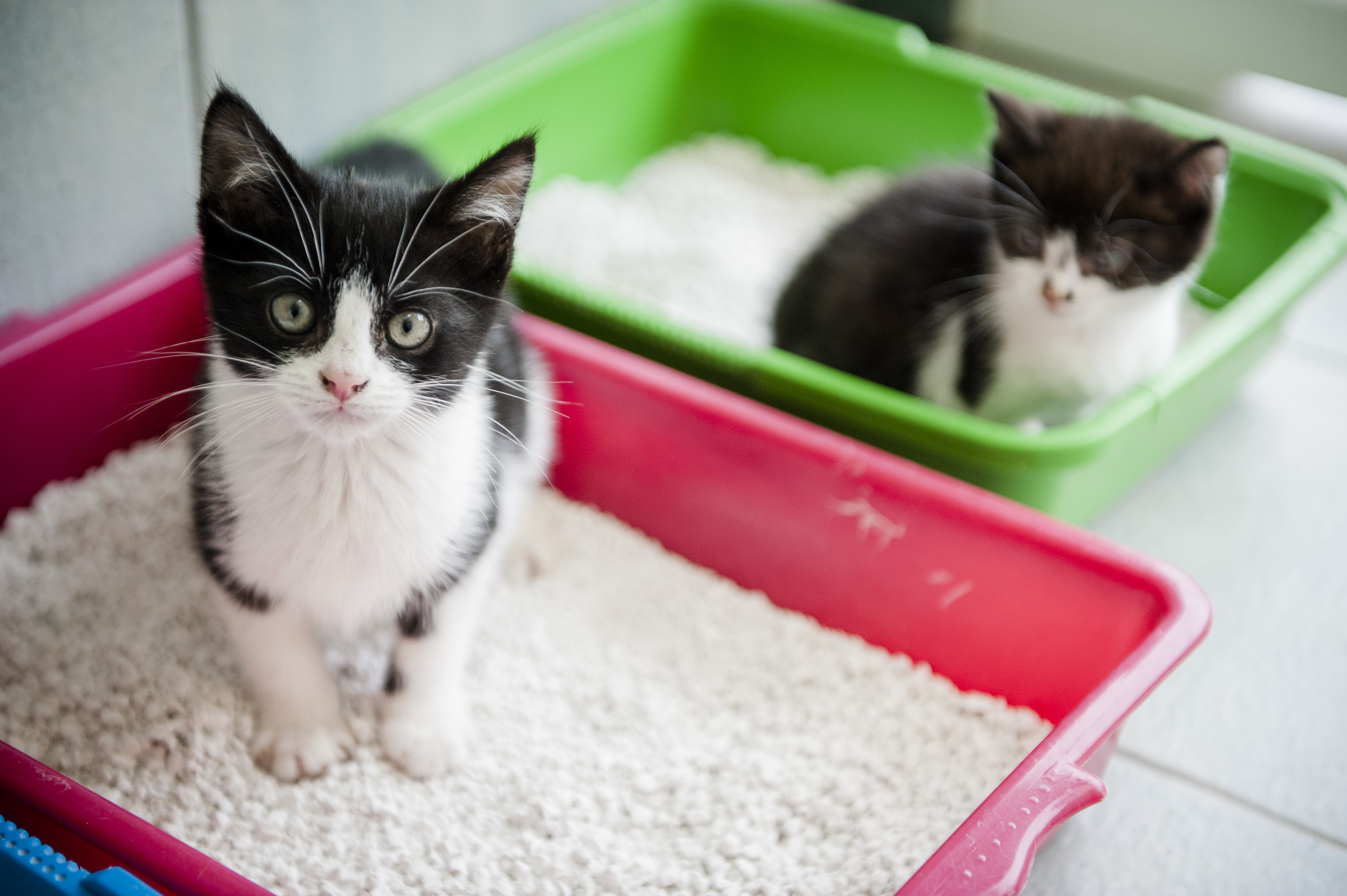
How to litter train a kitten
Cats are very hygienic pets and can easily be house trained with the right encouragement. Kittens usually pick up on how to use litter trays by watching their mother, but they may also need a helping hand from us.
When do kittens need to go to the toilet?
Your kitten might want to go to the toilet:
- after meals
- after waking from a sleep
- when they are sniffing the floor, scratching or beginning to crouch and generally looking as if they are about to go!
If your kitten is inclined to mess elsewhere in the house, it might be that they have been given too much access to your house too quickly. Kittens have tiny bladders and are very inquisitive – they may get 'caught short' if exploring an area far away from their litter tray.
If your house is large you may want to consider having a couple of trays down in a few key areas while your kitten is young, or keep them in one room or an area until you are confident they are using it regularly.
What litter tray will I need?
You will need a plastic litter tray, which can be filled with cat litter available from all pet shops and supermarkets.
The tray should be placed on newspaper to catch any litter pushed over the side during digging, but make sure it is not too deep for your kitten to climb in. You may need to buy a kitten sized tray to begin with so they can get in easily at first, but you will need to buy a larger one suitable for an adult cat as your kitten grows.
If you want to let your kitten out to use the garden in the future, then a simple open tray will do for the first few months. But, if you want your cat to continue to use the tray, you may want to buy one of the covered types which gives them more privacy, stops smells from escaping and prevents mess.
Note
If you have more than one cat then they will need a litter tray each plus one extra.
How to train your kitten to use the litter tray
- Place the tray in a quiet, accessible corner where your kitten will not be disturbed
- Make sure it is not next to food and water bowls, as they may be reluctant to use a tray close to their food
- Keep it clean, but do not empty the whole of the litter tray every day, just take out the soiled litter – this way they will be encouraged to return to the tray as it will smell familiar
- Unless your kitten has diarrhoea or the litter tray is particularly dirty (in which case you’ll have to clean far sooner), you will only need to completely empty the tray once a week.
Important
Some disinfectants, which go cloudy in water (such as Dettol), are toxic to cats, so use only hot water and a weak detergent when cleaning out the tray. Alternatively, you can find a pet-safe disinfectant in pet shops.
Why won't my kitten use the litter tray?
If your kitten is reluctant to use the tray it could be because:
- it is not clean enough – in which case you’ll need to empty it more often
- it is not big enough – it should be big enough for an adult cat to turn around in and to use more than once without getting dirty
- you have cleaned it out with a chemical that is too strong smelling
- it is too near the kitten’s bed or food bowls
- your kitten does not like the texture of the litter you have chosen – revert to a type previously used or try a different type. It's worth asking your breeder or rehoming centre what they're used to. Cats often prefer a fine grain litter and a depth of 3cm.
How to train your kitten to toilet outside
Once your kitten is at least five months old, fully vaccinated and neutered you may want to start letting them outside.
When your kitten starts to go outside more often spread a few handfuls of used cat litter from the tray onto well dug soil in the garden, this will encourage your kitten to dig there.
Do not remove the litter tray from indoors until your kitten has started using the garden.
Important
Some cats will still benefit from having a litter tray inside, even if they mostly go outside. This is especially the case in bad weather or if you have a lot of other cats in the area you live in.




